Taste Jiangnan Restaurant
A unique mise en scène that evokes the South China Delicacy
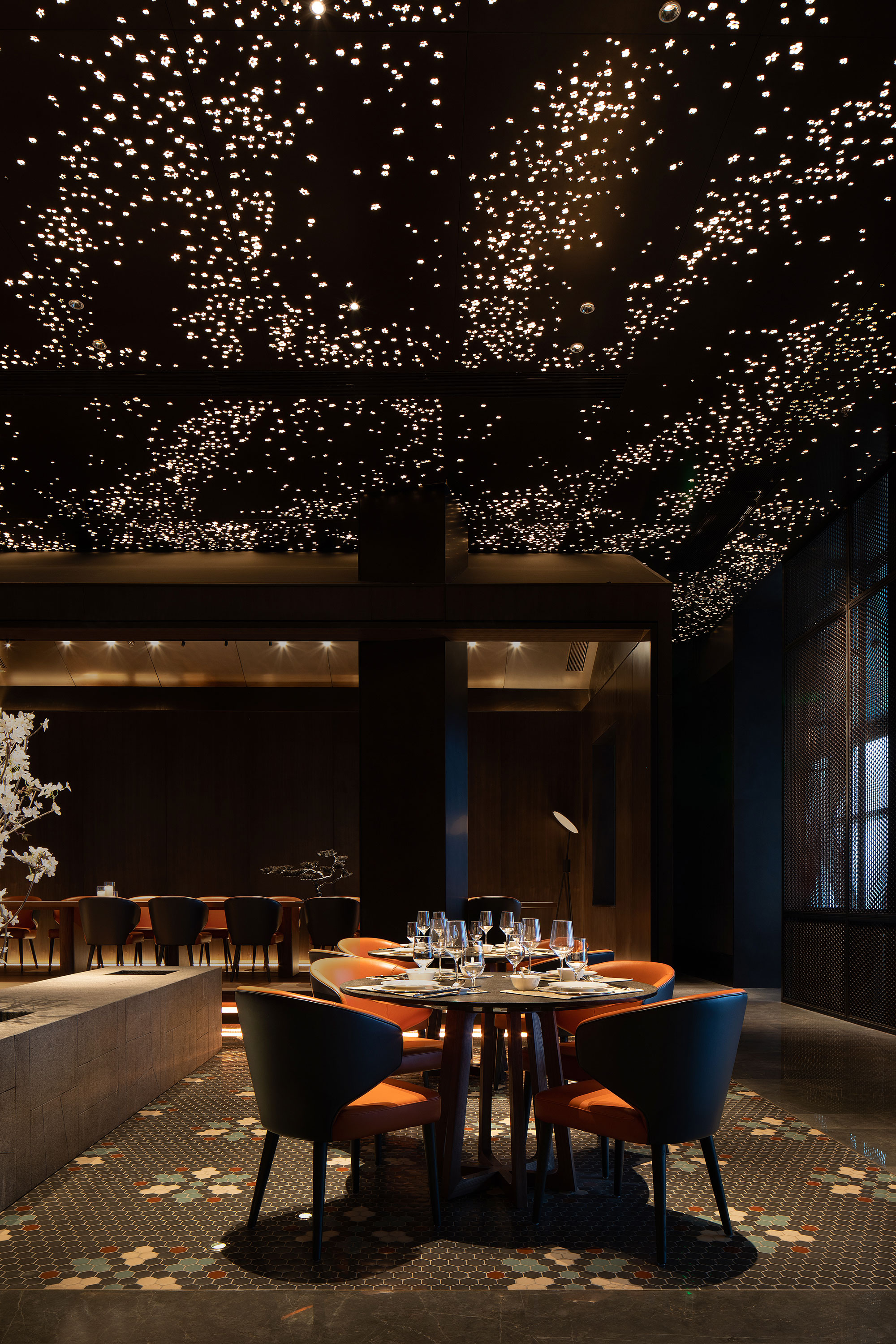
Such an impressive and atmospheric interior design cannot be ignored.
This restaurant interior was completed in 2020 but, like so many design projects in China, doesn’t appear to have been given due recognition by the western design press.
The edited words below have been created by the designers’ team and in part don’t translate coherently.
Perhaps the words do but the meaning is lost in translation.
Or, perhaps, this represents a difference in cultural complexities between the east and the west.
Make of it what you will, we adore these interiors and congratulate designer Liu Daohua on this spectacular project.
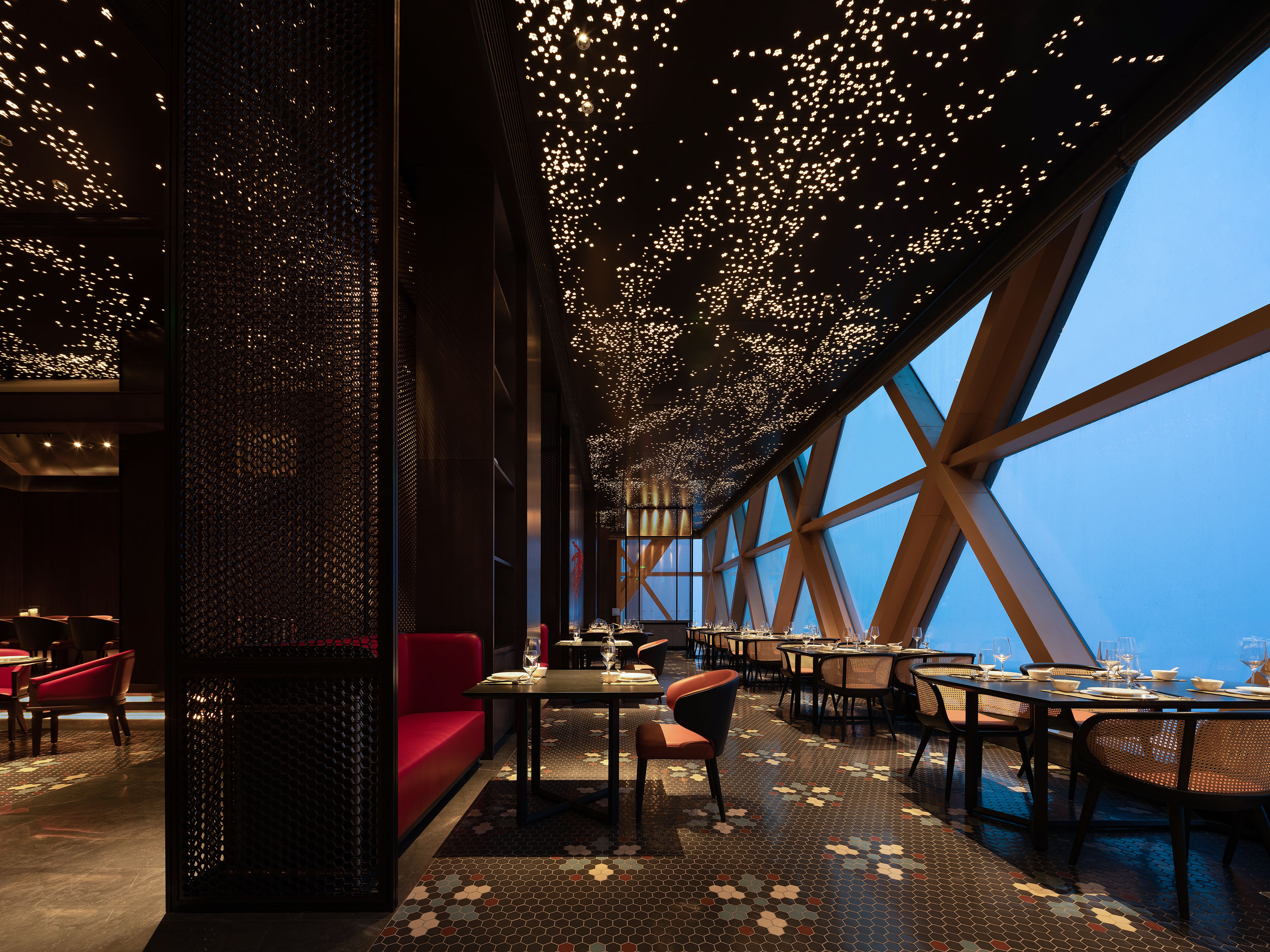
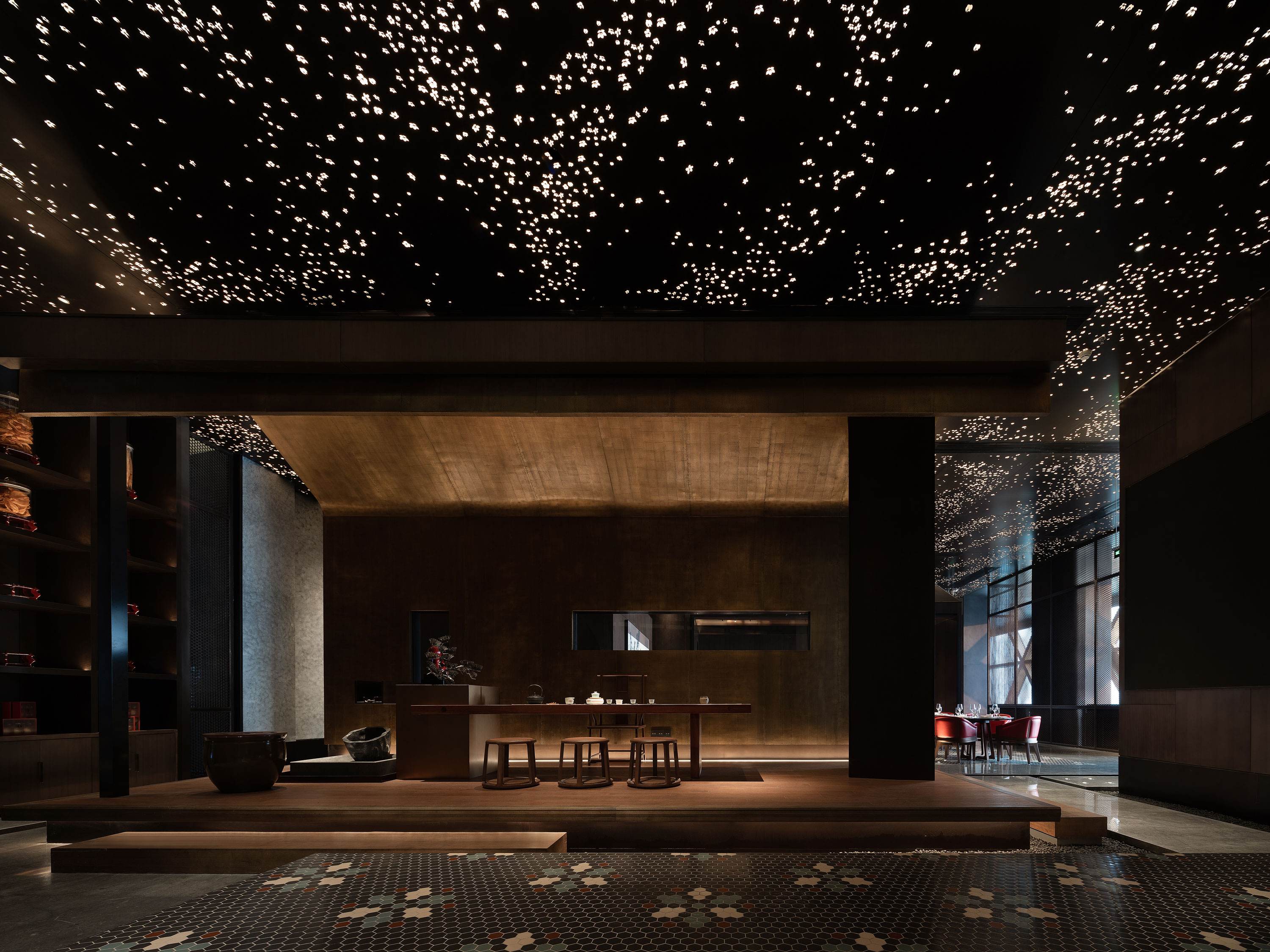
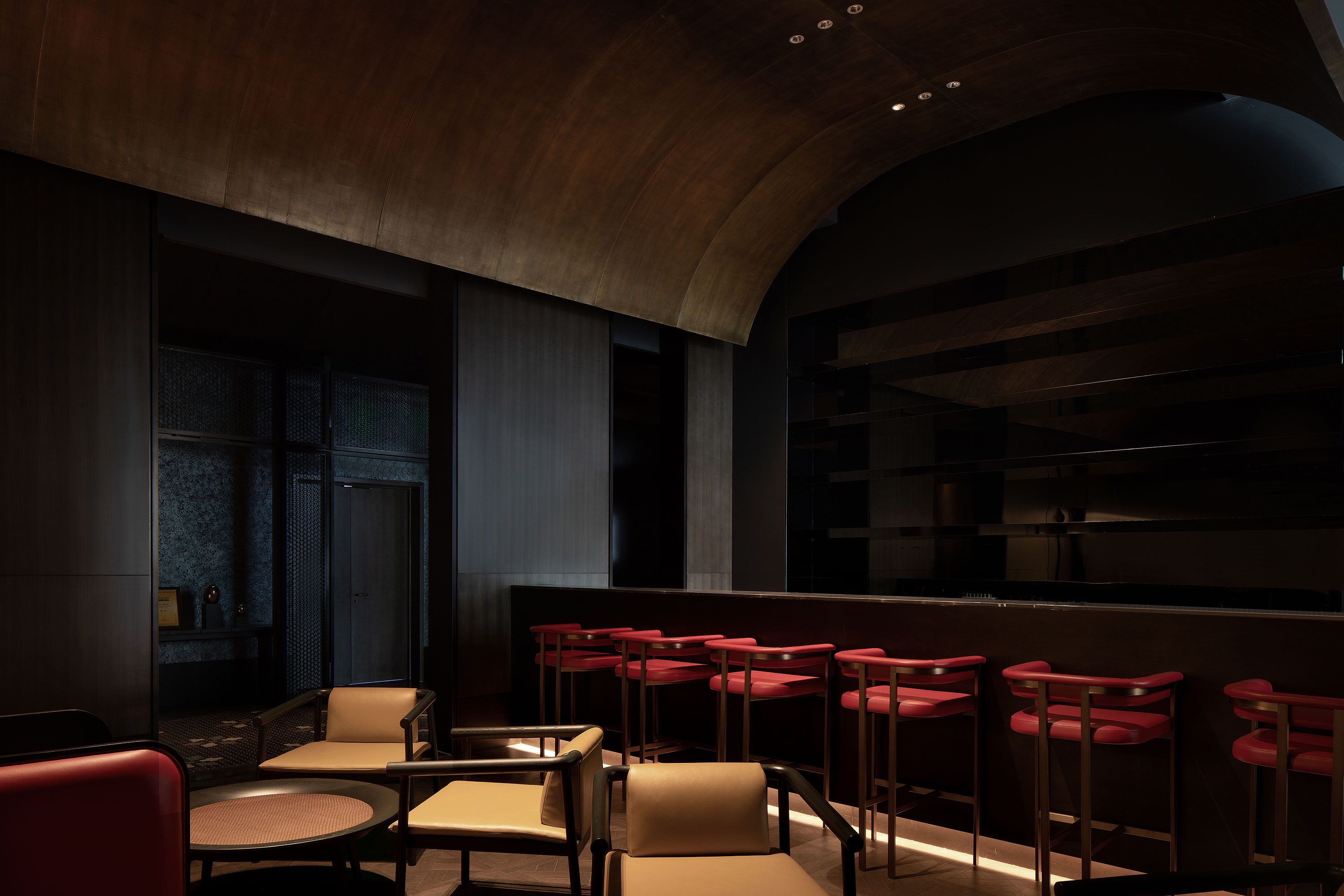
Simmering means making delicacies with small firepower in a slow way to stimulate beautiful experience from food, and tasting means enjoying delicacies from good simmering practice.
They mutually have a relationship of cause and effect.
Taste Jiangnan (Southern China) not only is about the meaning of words, but also contains the life style, life pace and food culture in Jiangnan.
The Chinese restaurant “Taste Jiangnan” was named for this reason.
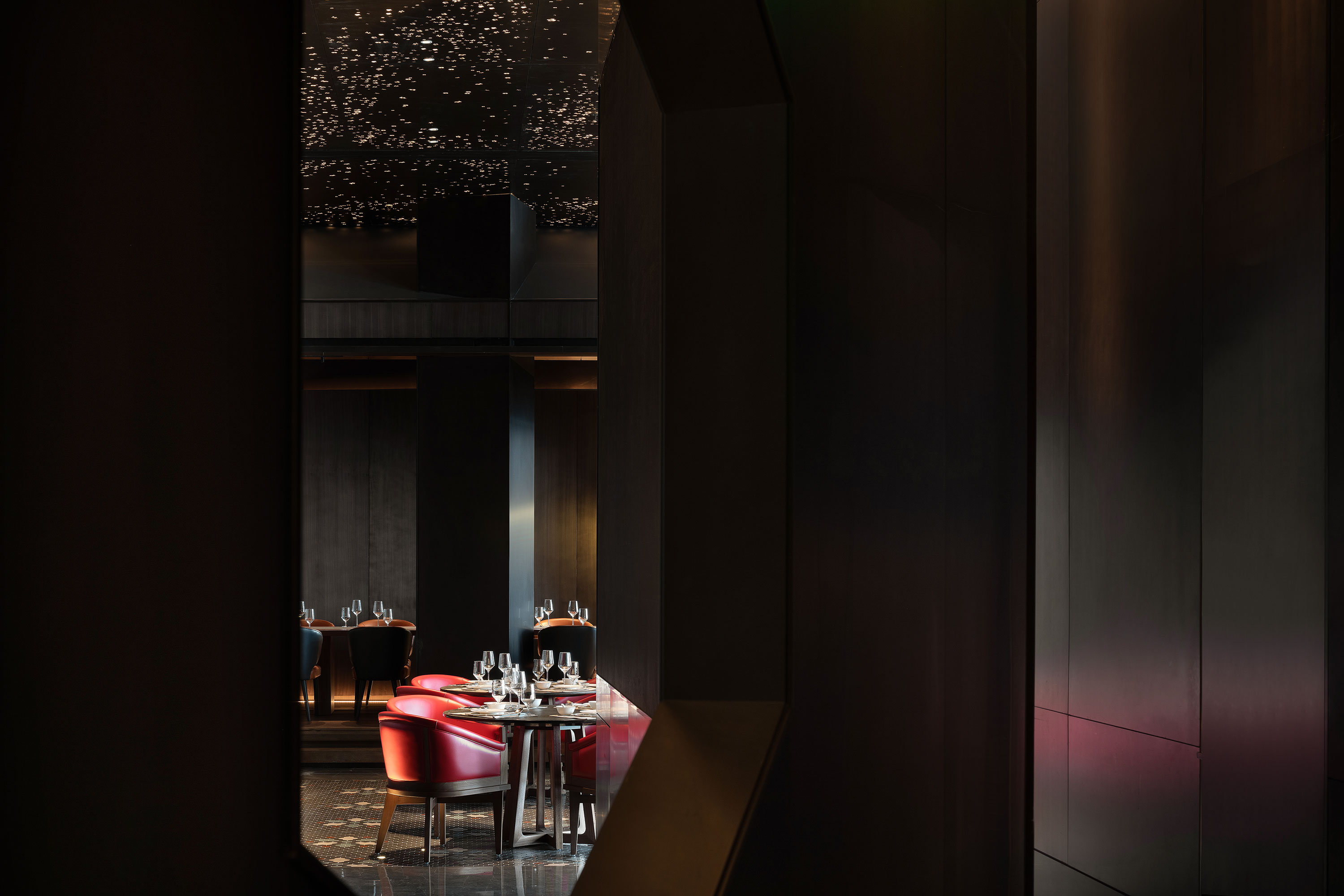
Taste Jiangnan is located on the 50th floor of Nanjing Golden Eagle Hotel, so guests can overlook Nanjing from this quiet but commanding environment.
Based on the water town scenery in Jiangnan, Designer Liu Daohua realized a cross-dimensional dialogue between traditional Jiangnan and modern aesthetics by transforming traditional architecture, rural settlements and Huaiyang cuisine into his design language, to pay tribute to the graceful water towns as described in the poem sentence “The ladies selling wine in restaurants are very beautiful in Jiangnan. Their arms are as white as snow when they lift their sleeves”.
Liu Daohua is famous for his design of restaurants and cafes.
He is adept at transforming natural life and cultural characteristics into elements in the space, combining practicability and artistic expression, and using architectural techniques to reshape the originally single space and explore the purest diet and life.
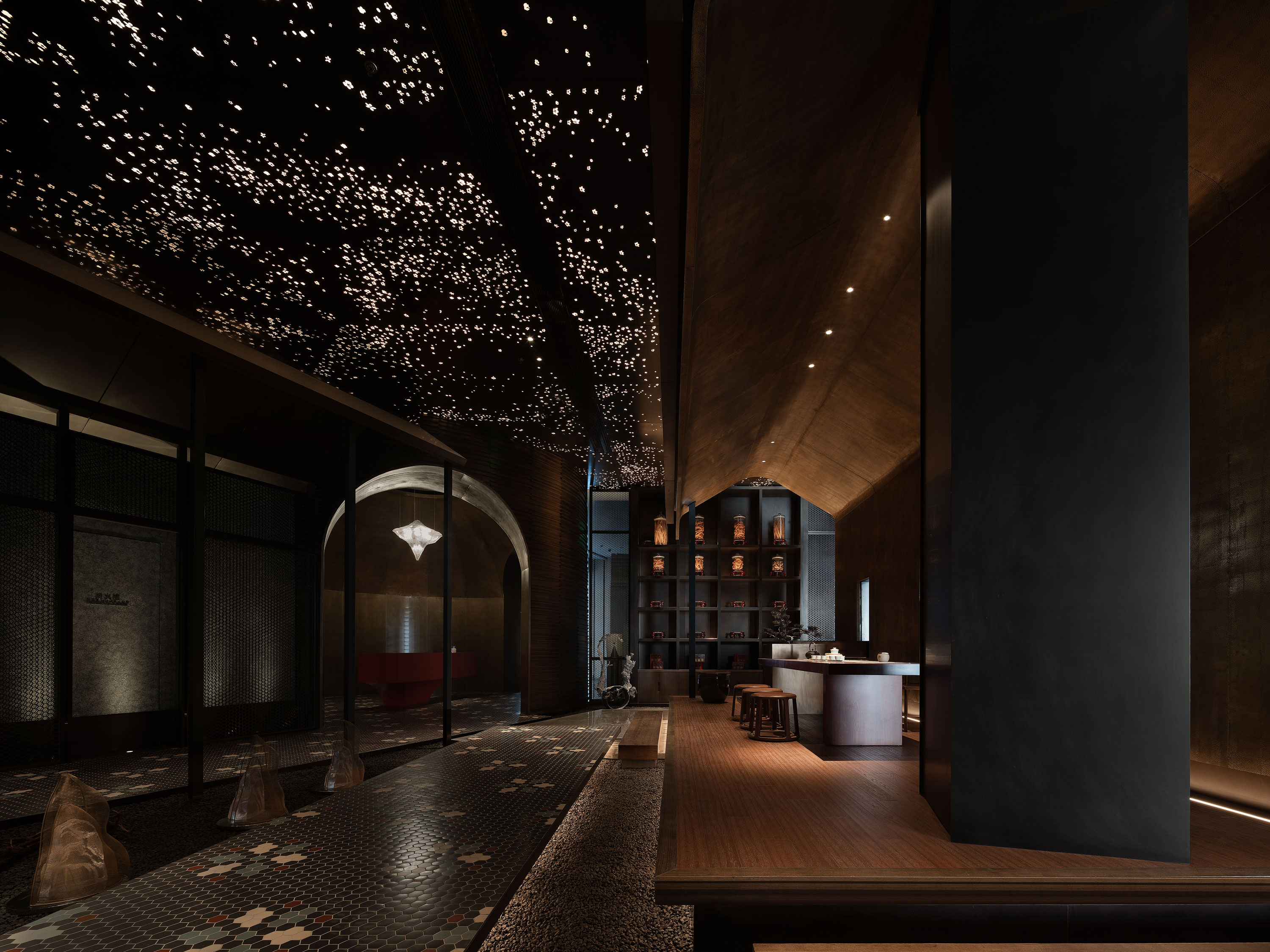
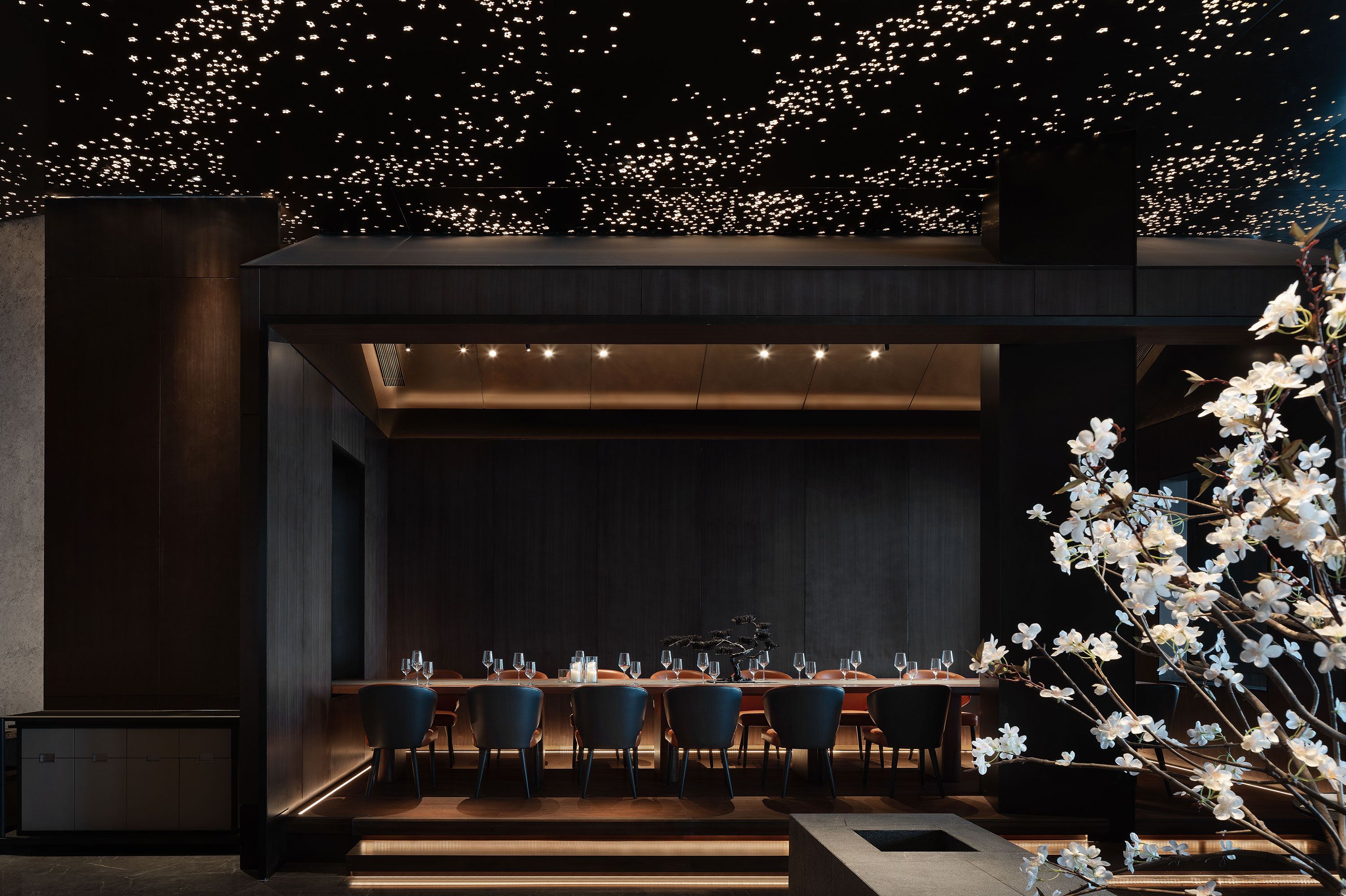
Upon entering the restaurant, guests will be attracted to a teahouse area.
As a core area and first impression at the entrance, the space was designed with practices different from conventional ones and integrates the concept of a traditional garden.
After passing through a “forest path”, a winding one as a spatial movement line, guests come to a place for appreciation, communication and leisure which is enclosed under the eaves of modern deconstruction.
Several seating scenarios were set up to satisfy the diverse needs of different customer groups.
Furniture was designed in a simple but advanced manner, and their red brown, burlywood and black overlap into different colour levels to show elegance.
In Taste Jiangnan, its indoor decoration deems dark brown as the fundamental key on the whole, and is embellished with deep or shallow brass with the texture of log (wood), which forms a bright colour line jumping out of profound colours.
With a sense of Jiangnan architecture, the space creates a delicate sense of layers with these scattered colours and shadows, thus providing guests with an elegant and quality dining experience.
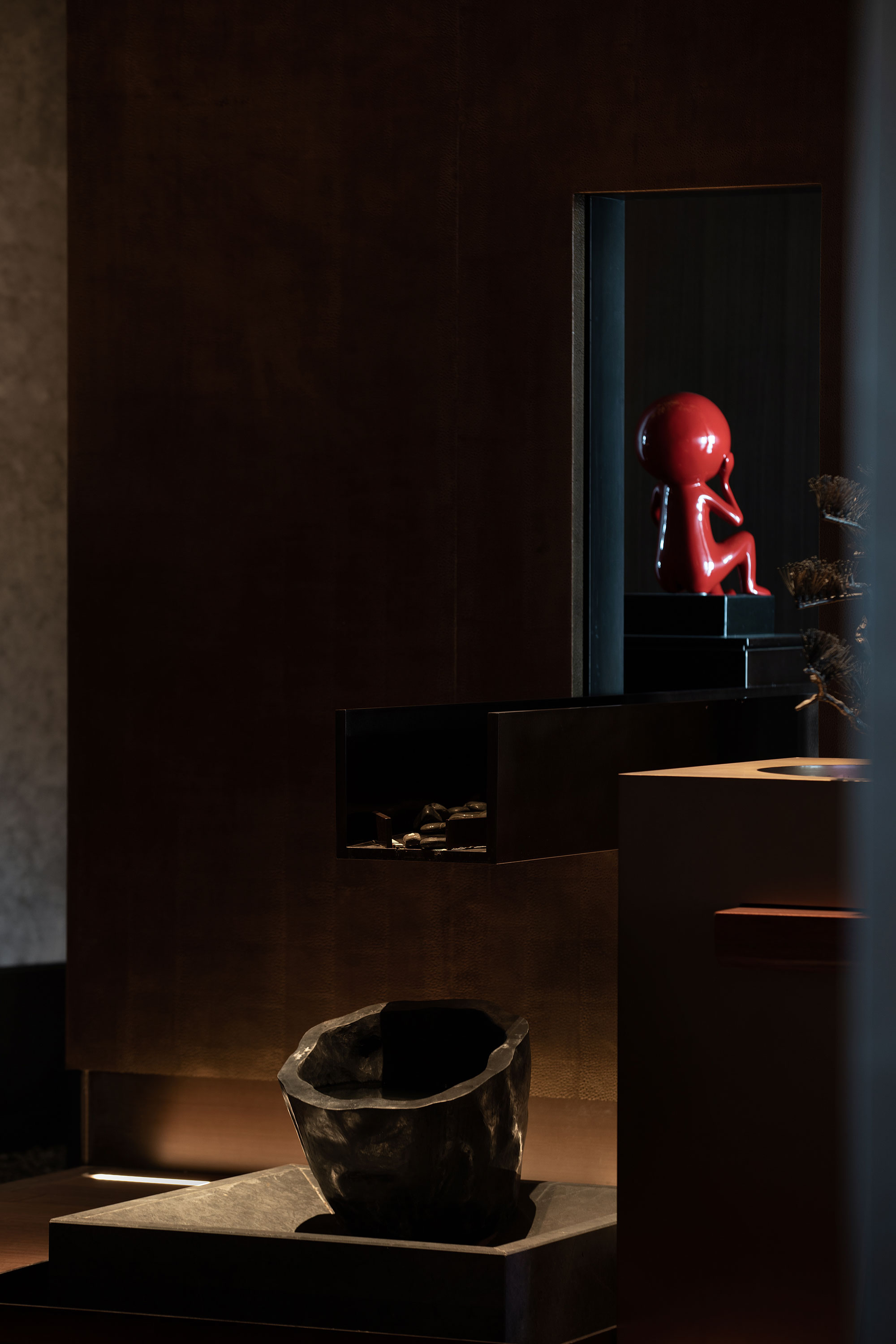
As the highest restaurant in Nanjing, Taste Jiangnan is connected with the outside by large-scale floor to ceiling windows, so that guests can overlook the scenery of Nanjing, including the graceful Qinhuai River and Zhongshan Mount.
The designer specially set up private boxes with the architectural style of Jiangnan water towns, which are independent of each other but connected mutually, and quiet in sufficient ritual feeling.
Plum blossom, the top of the 24 major flowers, is the city flower of Nanjing.
It not only has the elegant appearance of flowers, but also auspiciously implies “five blessings in plum blossoms” with its five petals.
With “plum blossom” as a theme concept element, the designer deduced it in different details of the space and formed a theme design for the whole space, as if fragrant plum blossom drifts freely under the sunshine.
These staggered petals form both the mark of life and majestic beauty.
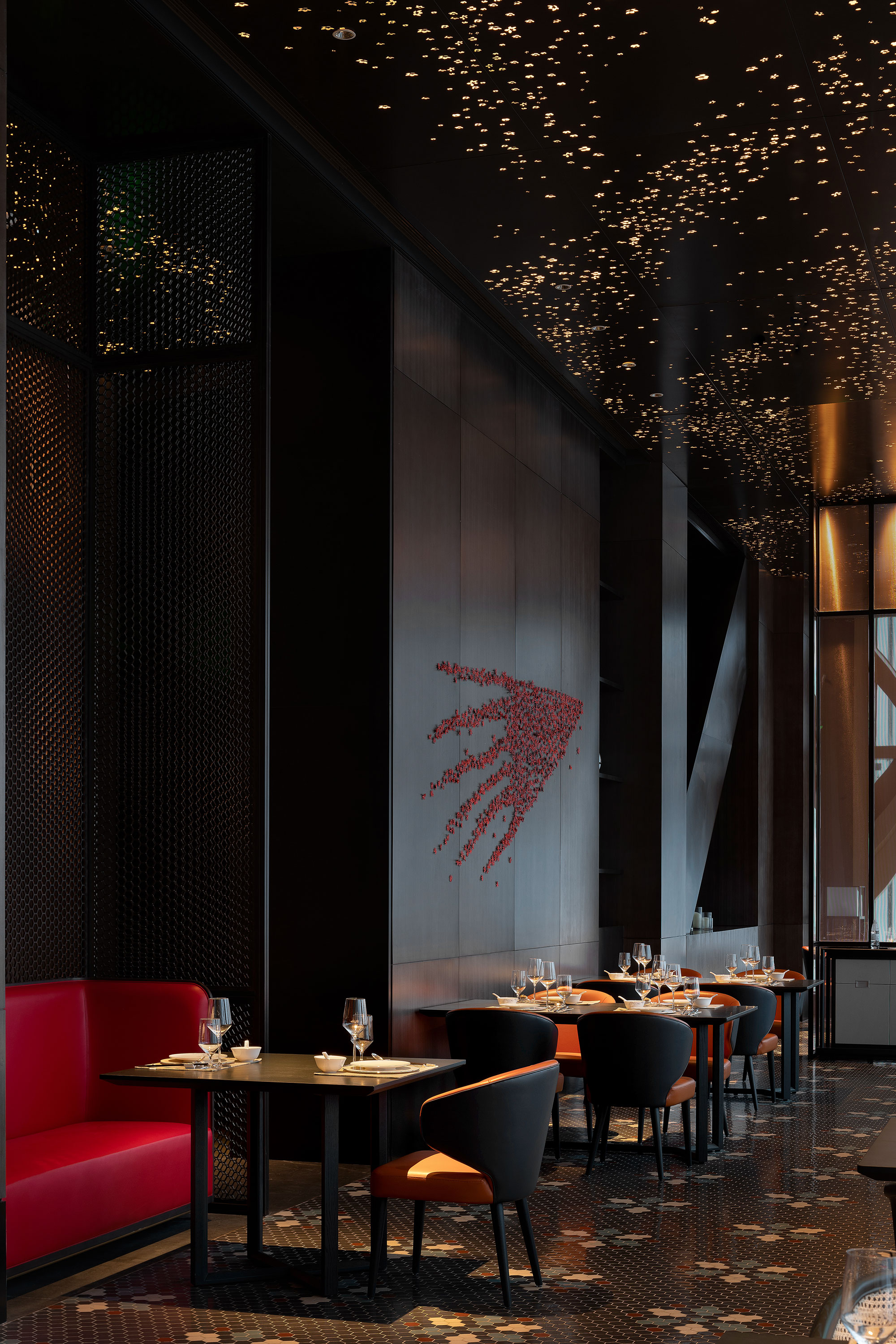
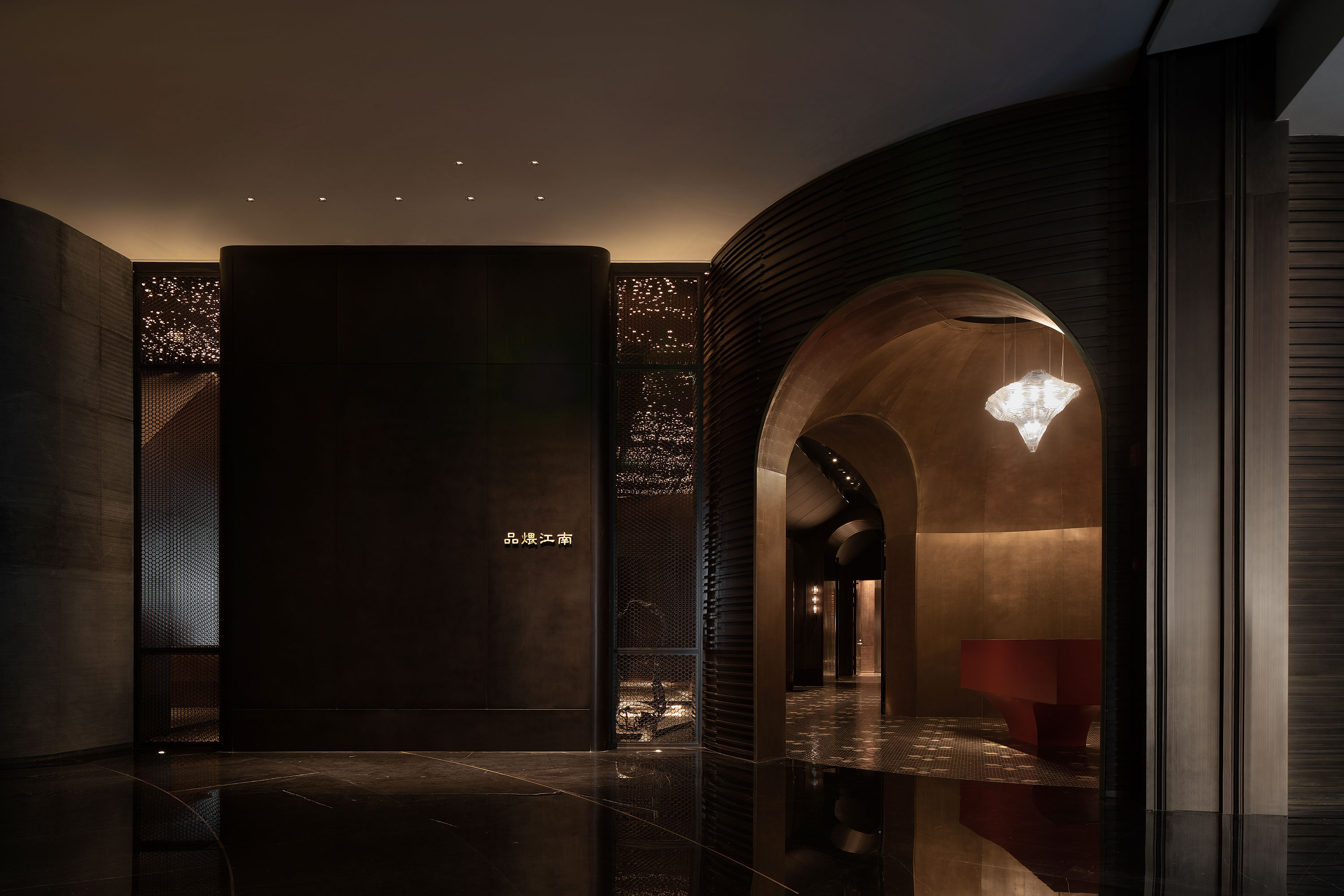
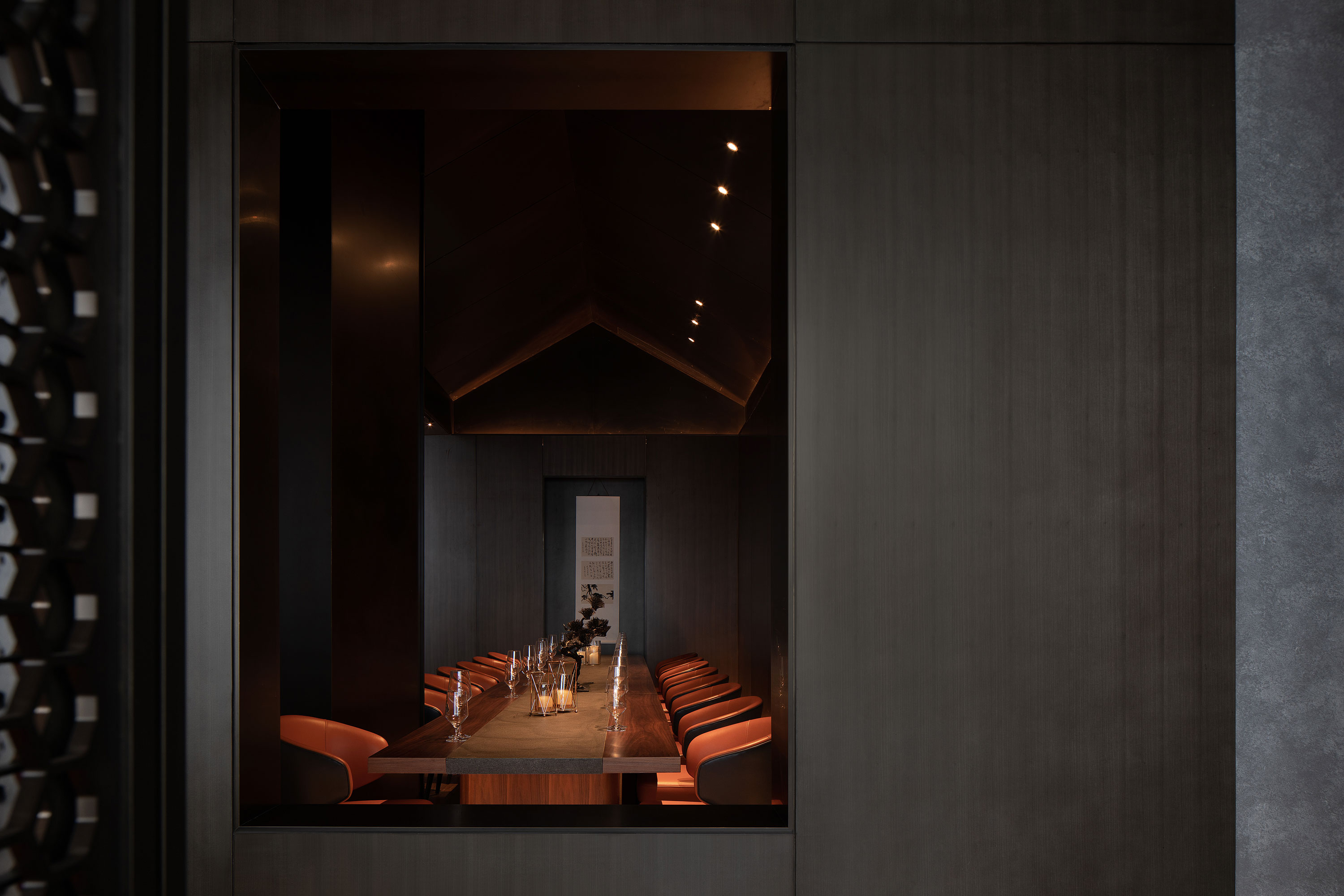
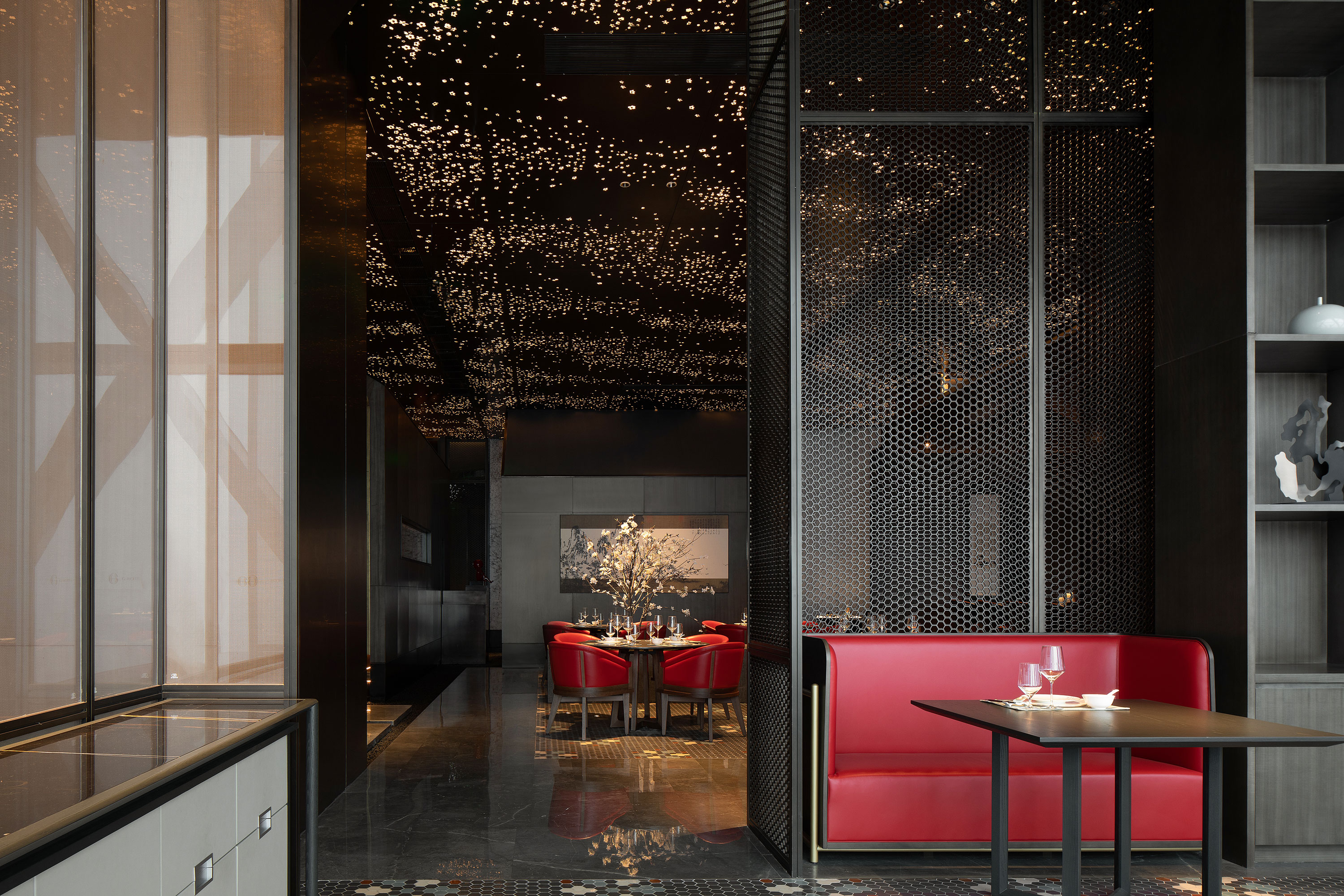
Liu Daohua created a unique artistic ceiling for Taste Jiangnan by retaining the most classic silhouette of plum blossom based on its extracted shape.
The patterns of the ceramic tiles customized for Taste Jiangnan also correspond to the theme of plum blossom, and countless petal elements together constitute the blooming trend of Taste Jiangnan.
There is a saying in the Wei Chi Hexagram of the I Ching (Yi · Weiji), “Each shall live in a square place, so that all have their steady residences.”, which means that square can domicile people in a peaceful and pleasing manner.
With the perspective of inheritance, acceptance and recovery, the modern space was highlighted with some local characteristics in Taste Jiangnan.
Sometimes, space design must surpass the requirements of pure functions and combine with traditional architectural culture, so as to realize the spiritual meaning of space and trigger the spiritual resonance of people.
Photography: Lu Haha




